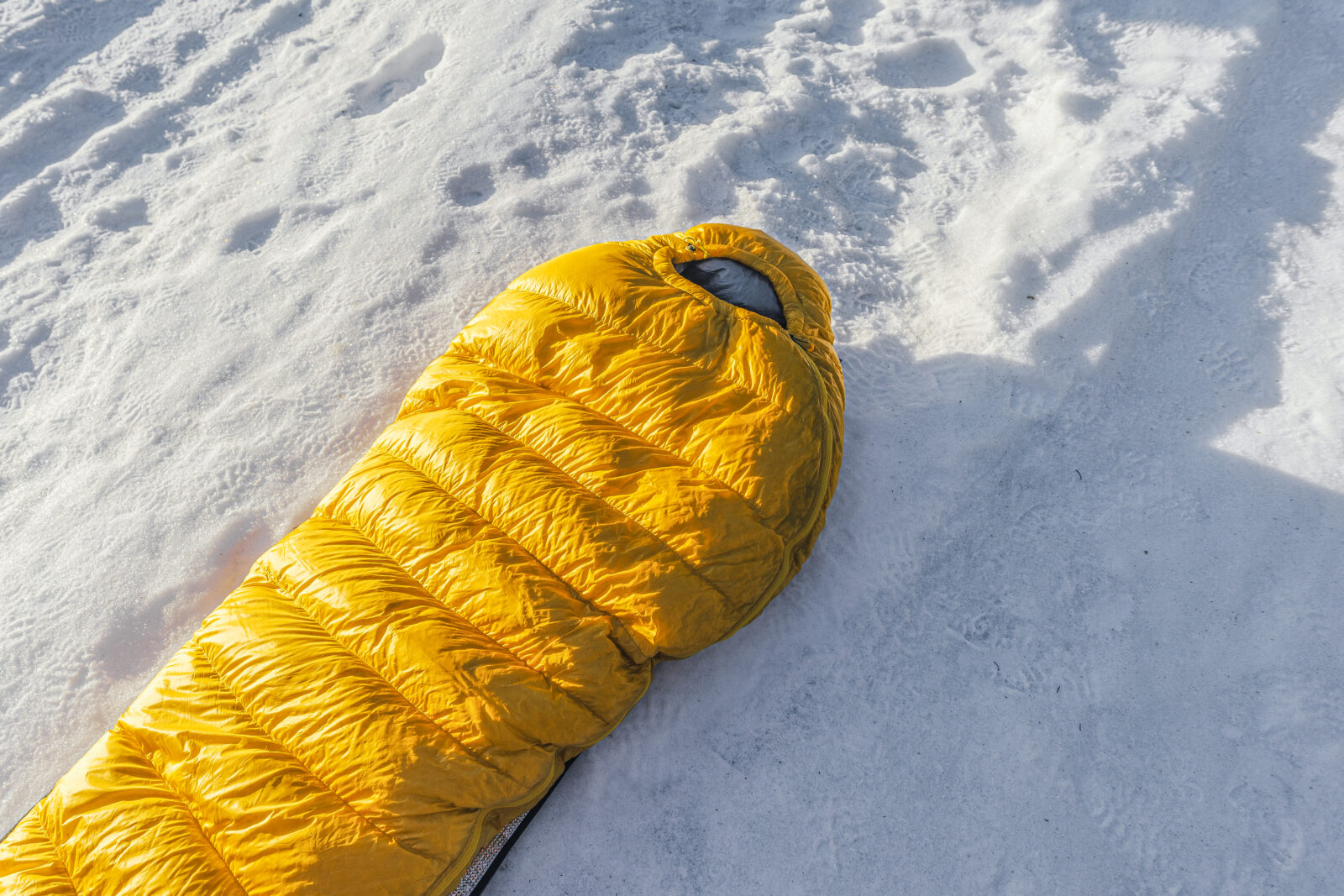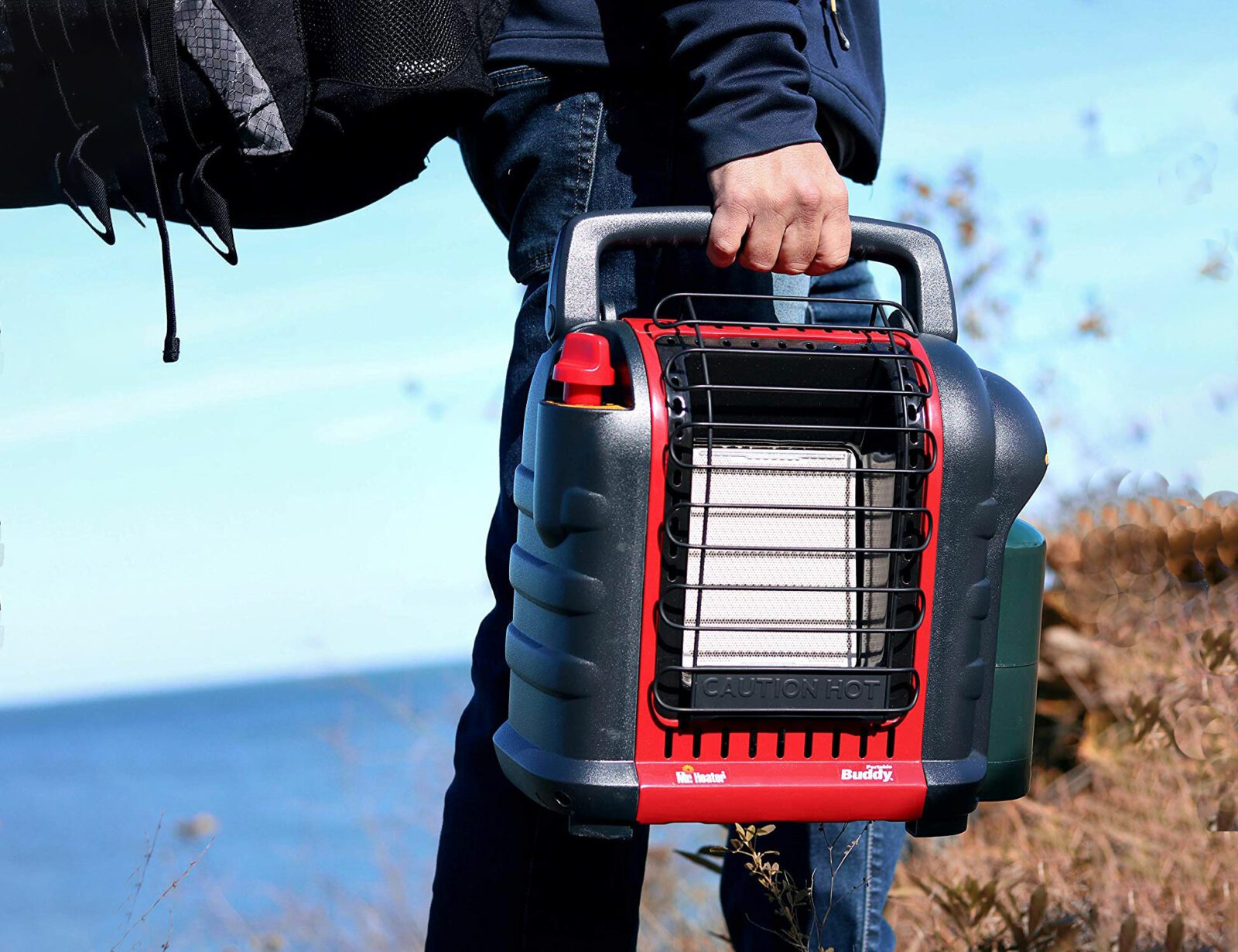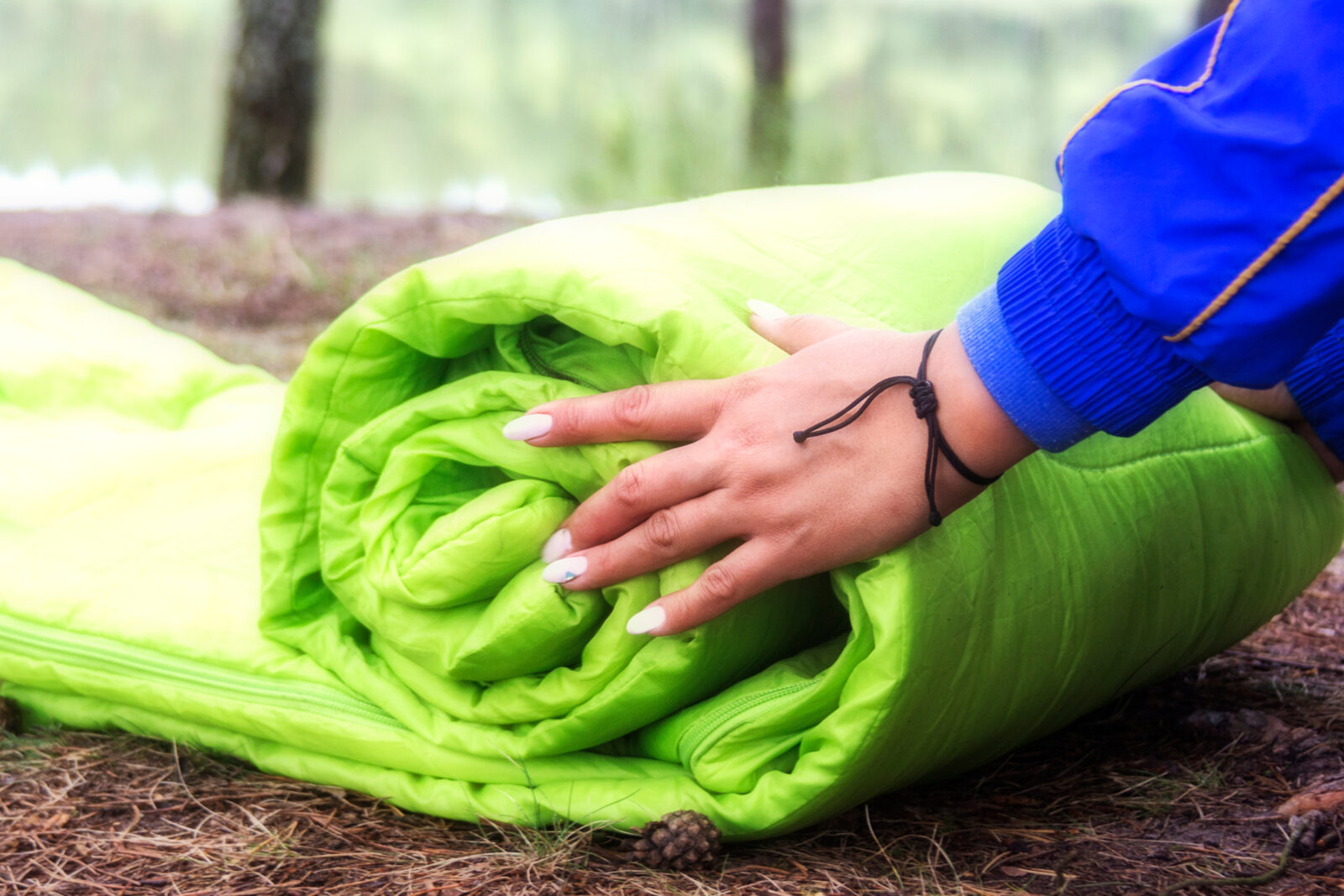If you’re going winter camping, having all the right gear is of the utmost importance. Leave home without the right equipment in tow during the winter months and you might just find yourself outside in the cold without the means to stay warm at night.
But, what exactly should you bring on a winter camping trip?
From sleeping bags to headlamps and shovels, we know how easy it is to feel overwhelmed when packing for a winter camping trip. That’s why we’ve created this winter camp checklist to get you started.
Coming up, we’ll walk you through everything you need to bring with you on your wintertime outdoor adventures. That way, you’ll always have the perfect equipment on hand for your winter camping expeditions.
Let’s get started.
1. Winter boots
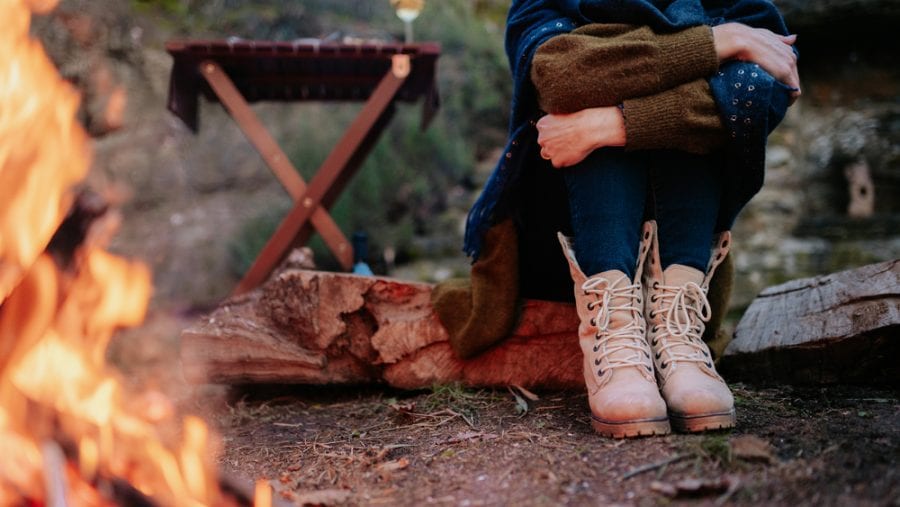
First things first, no winter adventurer should ever head into the mountains without the appropriate footwear.
However, while hiking boots are great for the summertime, they just don’t cut it when there’s lots of snow and ice on the ground, like what you’d find in Yosemite National Park in the winter. In fact, wearing regular ol’ summer hiking boots in the winter months is a recipe for disaster, especially when they get soaked with snowmelt and can no longer keep your feet warm.
Therefore, having dedicated winter hiking boots are essential for anyone adventuring during the winter months. These boots should be fully waterproof and highly insulated to help keep your feet warm and dry as you trek through the mountains.
2. Winter sleeping bags
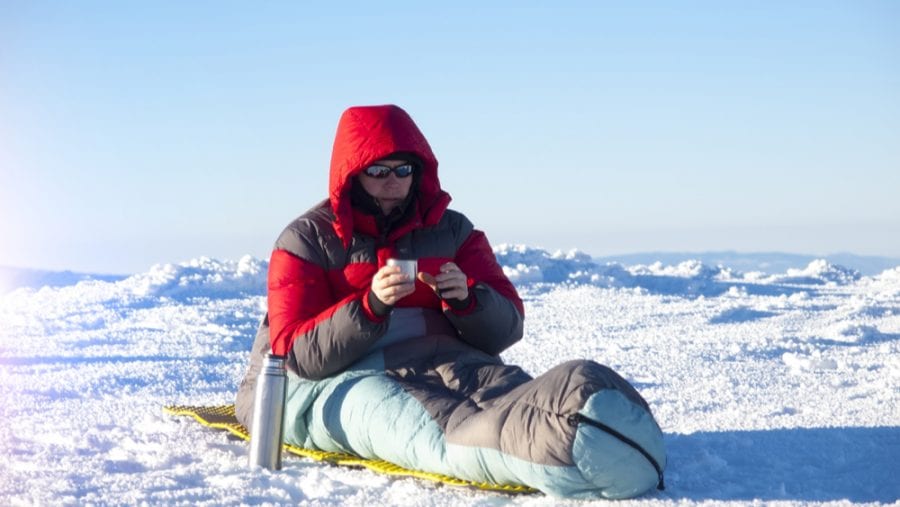
In addition to a set of winter boots, the other piece of winter-specific gear that you’ll need is a proper winter sleeping bag.
While it may seem easier to simply use your summer sleeping bag on your winter trips, doing so is a great want to ensure that you’ll be cold and uncomfortable at night.
In fact, unless you’re expecting very mild, spring-like temperatures on your trip, like you might expect in Joshua Tree National Park, there’s no substitute for a winter-rated sleeping bag. These models are designed to keep you warm in very cold conditions, which is critical if you’re trying to snooze outside during the wintertime.
Read More : Sleeping Bag Temperature Ratings Explained
3. Sleeping bag liners
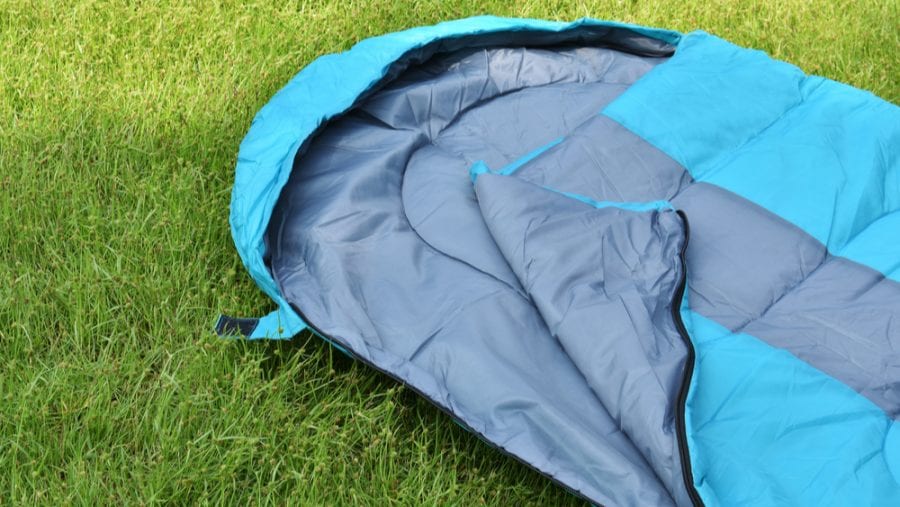
If you’re expecting particularly cold conditions during your trip, it might be worth adding a sleeping bag liner to your trusty winter sleeping bag.
Indeed, in truly frigid conditions, a well-insulated sleeping bag liner can add upwards of 25ºF (14ºC) of warmth to your sleeping bag’s temperature rating without adding much bulk to your pack.
Ultimately, when the mercury drops on your next winter camping trip to Rocky Mountain National Park, you’ll be glad you packed that sleeping bag liner.
4. Sleeping pads
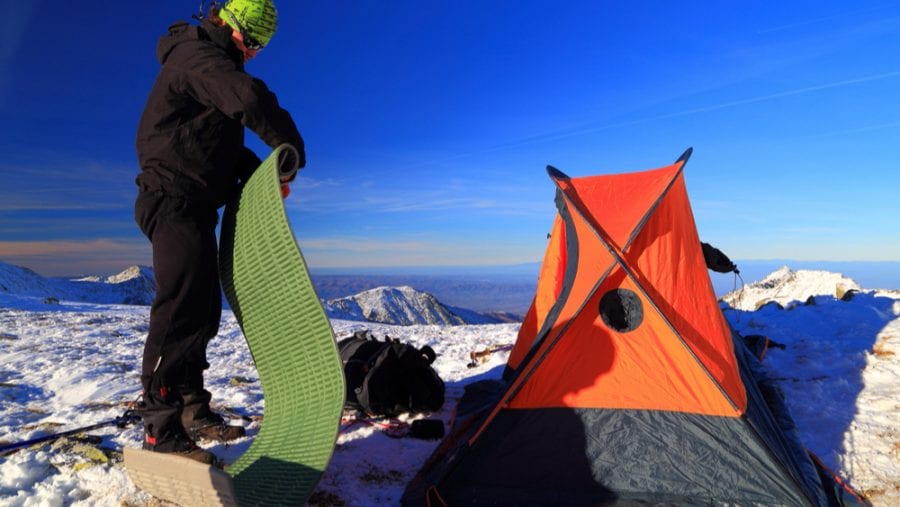
The last piece of sleep-related gear that everyone ought to bring while winter camping is a sleeping pad. In particular, winter campers should plan to bring two sleeping pads.
Why two sleeping pads, you might ask?
Well, sleeping pads are designed to insulate you from the ground. In the warm summer months, a single sleeping pad might be sufficient for most campers. But, when the ground is frozen or covered in snow, one sleeping pad just isn’t going to cut it.
In these situations, layering two sleeping pads on top of each other is a solid choice. As a general rule, it’s best to use one foam sleeping pad and then one inflatable pad for best performance in the mountains. Doing so helps to provide a good balance of warmth, affordability, and weight savings.
Read More : What is A Sleeping Pad R-Value?
5. Shovels
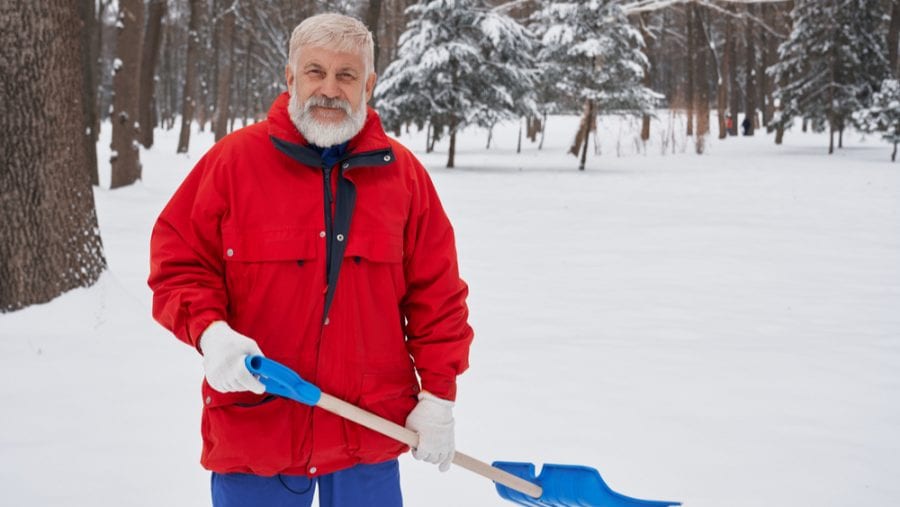
If you expect to see lots of snow on the ground while winter camping, then a shovel is a must-have piece of gear.
In particular, a shovel is essential for constructing snow caves, building wind-blocking walls for shelter, and for general camp construction. Furthermore, if you plan on spending a lot of time in avalanche terrain, snow shovels are an essential tool for avalanche rescue.
Therefore, a shovel should always be on your winter camp checklist. You never know when it’ll come in handy.
6. Headlamp
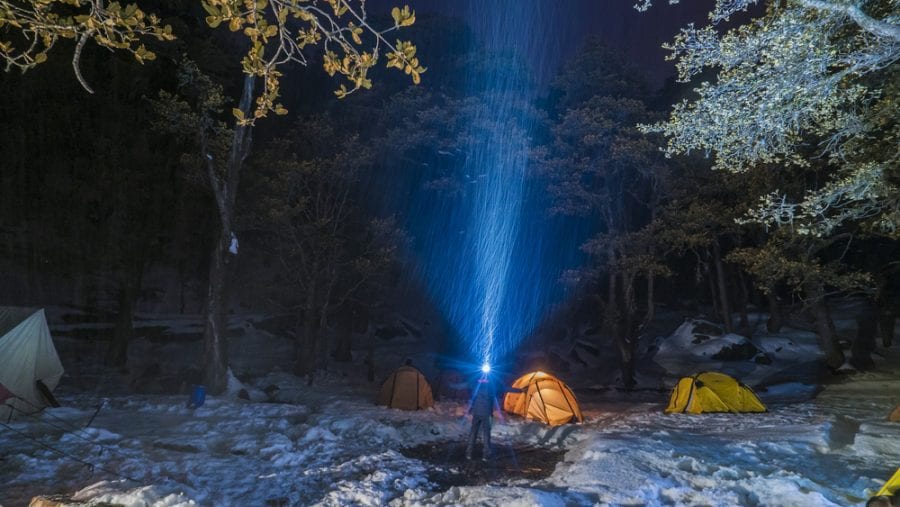
If there’s one universal truth about winter camping adventures it’s that it tends to get dark very early in the evening.
In fact, depending on where you plan on camping, you might find that the sun sets as early as 3:00 pm in the afternoon! Or, in some places, the sun might never truly rise above the horizon, leaving you with just a soft blue light that lingers throughout the day.
As a result, all campers should have a headlamp on hand when winter camping. Of course, headlamps are an important part of any camping checklist, but they’re even more critical during the winter months.
That being said, you’ll need to take particular care when winter camping with electronics. The cold is not kind to electronic pieces of gear, like headlamps, so you’ll want to bring plenty of spare batteries for your trip. In fact, if you have the ability to pack two headlamps, that’s often the best course of action for a wintertime adventure, just in case.
7. Firestarters
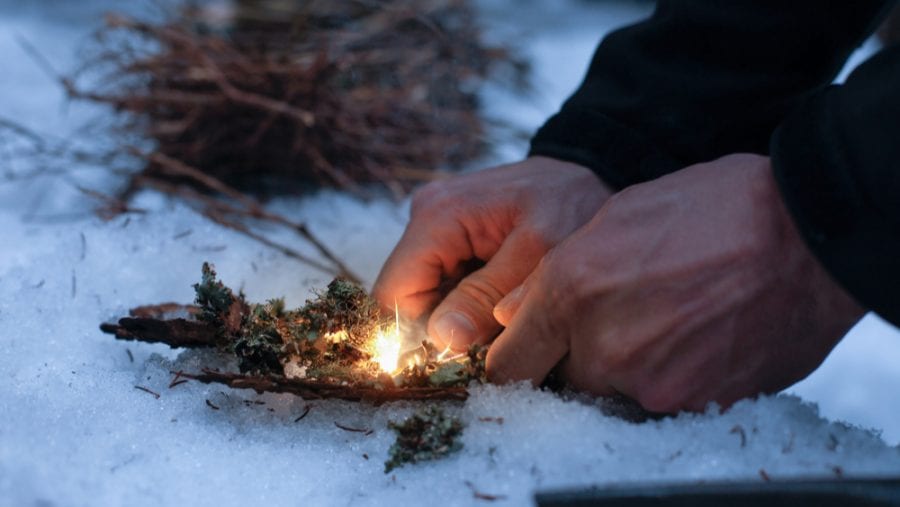
Anyone that’s ever tried to start a fire in the snow knows how challenging it can be. From damp wood to wet and windy conditions, starting a fire in the winter just isn’t as easy as it should be.
Therefore, anyone going winter camping ought to bring firestarters with them for their adventures. Indeed, the right firestarters can turn your campfire woes into a thing of the past, making it easy for you to seamlessly craft a campfire in just a few minutes.
8. Survival gears
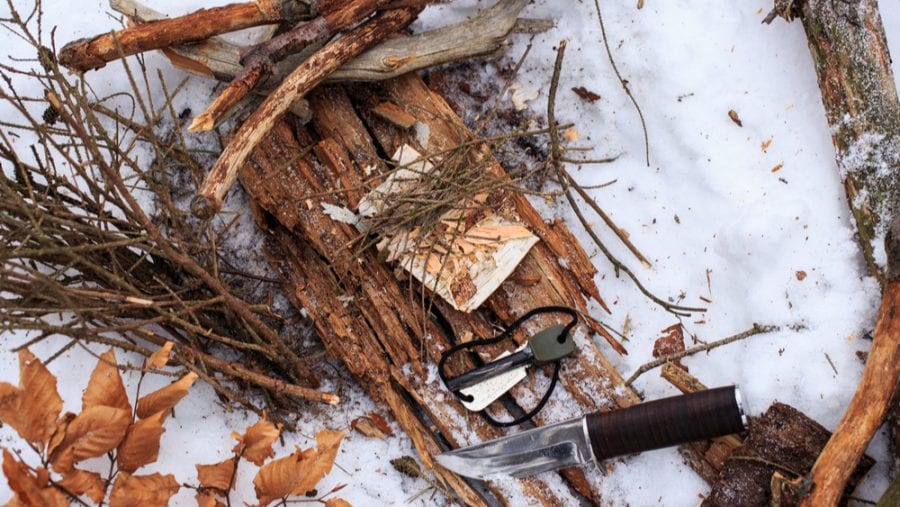
The winter months can bring harsh and unpredictable weather. While we hope that everything goes according to plan on your next trip, however, it’s always worth coming prepared for any eventuality.
In a winter camping context, this means packing plenty of survival gear for your adventures. Having survival essentials, like bivy sacks, paracord, knives, and the like, can make a big difference if you get caught outside in an emergency.
This survival gear is also particularly important if you plan on doing day hikes from a central base camp during your trip. In these situations, it’s often easiest to leave your campsite set up during the day and pack a small kit of survival gear for your hikes in the mountains.
9. Hiking gloves
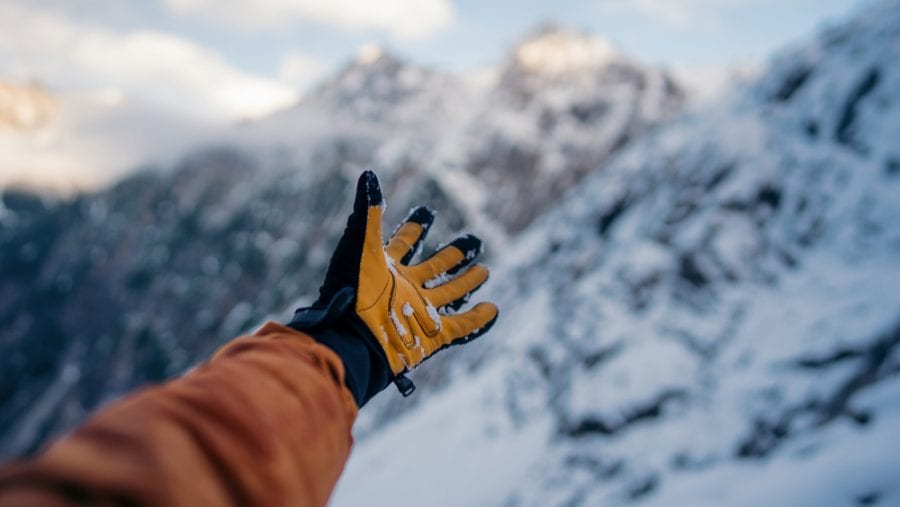
No one likes cold hands. But, keeping your hands warm while winter camping isn’t easy. That’s why you need to pack plenty of hiking gloves for your trip.
As a general rule, we recommend packing four to five pairs of gloves for winter camping. That might sound a bit extreme, but if one pair of gloves becomes soaking wet, they’re essentially useless until they dry out. So, having plenty of extra gloves available is a must while winter camping.
Or, for an even better camping experience in the cold, consider packing heated gloves, too. Your hands will thank you later.
10. Heated socks
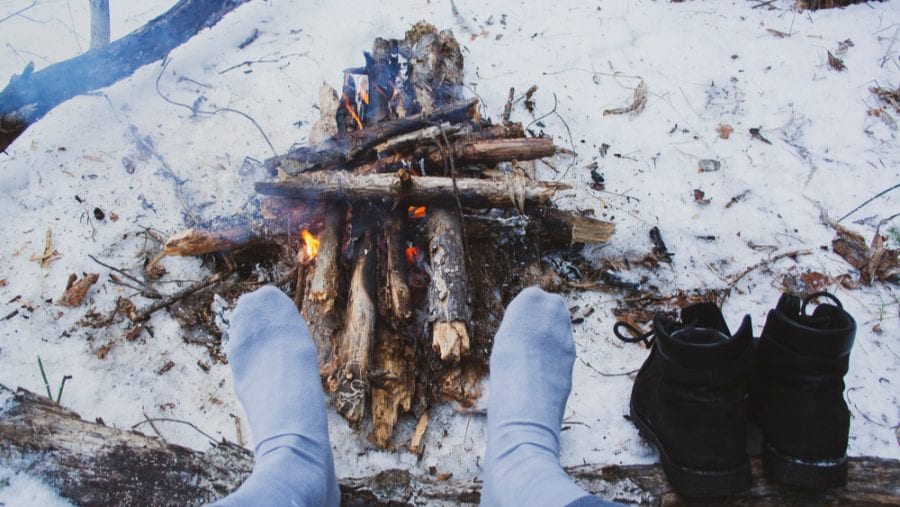
If there’s anything worse than cold hands, it’s cold feet. However, many of us suffer from cold feet in the wintertime simply because we’re limited in the number of socks we can reasonably wear at one time.
Thankfully, there’s an answer to your woes. A pair of heated socks.
With the right heated socks, you can sit back, relax, and enjoy your toasty warm toes without having to worry about getting frostbite while camping.
What could be better?
11. Tent heaters
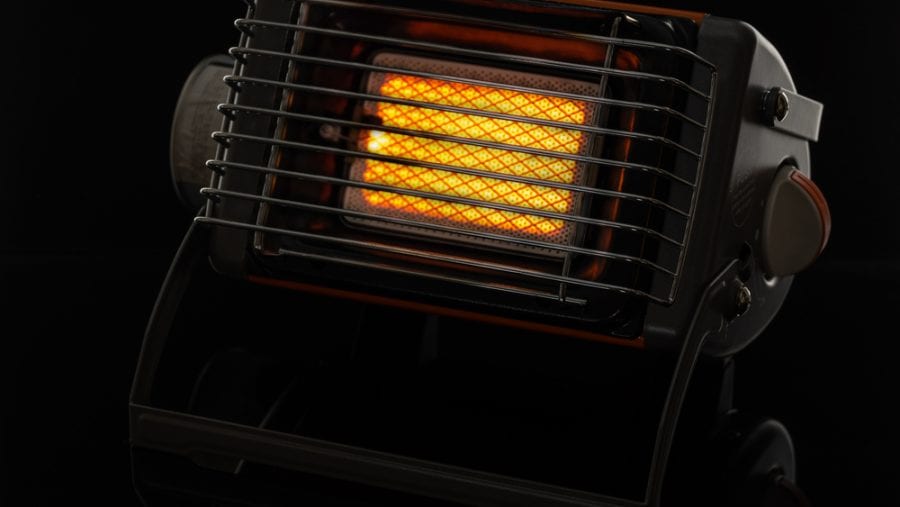
If you plan on car camping in an amazing locale like Great Smoky Mountains National Park during the winter, you’ll definitely want to consider packing a tent heater for your travels.
Although a tent heater isn’t a substitute for having a proper winter sleeping bag, nor can a tent heater make your shelter as warm as your home, they can go a long way toward improving your comfort at night.
In fact, using a tent heater for a few minutes before bed can help you stay warm throughout the night. At the same time, turning on your tent heater as soon as you wake up can help you get up and get dressed in a much more comfortable environment than you’d normally find in the winter months.
Of course, most tent heaters are fairly large and bulky, so they’re not suitable for backpacking. But for wintertime car camping adventures, they’re hard to beat.
Gaby Pilson
Gaby is a professional mountain guide with a master’s degree in outdoor education. She works primarily in the polar regions as an expedition guide, though she can be found hiking, climbing, skiing, sailing, or paddling in some of the world’s most amazing places when not at work.
